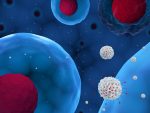Proteins in Saliva May Be Potential Non-invasive Biomarkers, Mouse Study Suggests
Written by |

Certain proteins in saliva are found at significantly different levels in mice modeling Sjögren’s syndrome as compared with healthy animals, and may serve as promising biomarkers for the chronic autoimmune disorder, a study found.
If the findings are confirmed in humans, they could advance a method to diagnose Sjögren’s using saliva samples, a non-invasive approach that also is practical and easy to use.
The study, “Proteomic profiling of saliva reveals association of complement system with primary Sjögren’s syndrome,” was published in Immunity, Inflammation and Disease.
Sjögren’s syndrome is marked by the inflammation of certain glands, mainly those producing tears and saliva. Its exact causes are largely unknown, and symptoms often mimic those of other diseases, which makes a diagnosis difficult.
The diagnosis involves testing the eyes and saliva, taking samples of blood and urine, and sometimes removing a piece of salivary gland tissue to look for signs of inflammation.
It has been challenging to find more accessible biomarkers to avoid invasive procedures and reduce the time to diagnosis. Thus, to come up with new biomarkers, a team of researchers in China looked for differences in the set of proteins (proteome) present in saliva from a mouse model of Sjögren’s versus healthy animals.
Experimental Sjögren’s was induced in three animals by injecting a mash of salivary gland tissue from other mice mixed with a substance that enhances the immune response to a foreign body. This mixture breaks immune tolerance, or unresponsiveness, to the salivary glands and results in an autoimmune response similar to that seen in humans. The study also included three healthy mice as controls.
After confirming that the Sjögren’s mice had multiple features of the disease — including reduced saliva production and immune cell infiltration into the salivary glands — the researchers examined saliva samples from both control and Sjögren’s animals to determine which proteins were differentially expressed.
A total of 50 proteins were identified, including 14 that were more abundant in Sjögren’s saliva samples than in control animals and 36 proteins whose levels were lower in diseased animals. The majority of these proteins were related to immune processes.
“Most [less abundant] proteins are closely related to immune function, indicating that their reduced levels may affect the innate and adaptive immune responses during the progression of pSS [primary Sjögren’s syndrome] and other autoimmune diseases,” the researchers wrote.
In turn, “the upregulated [more abundant] proteins … may be involved in reducing saliva secretion,” they added.
Using bioinformatic analyses, the team found five proteins — C3, SERPING1, FGG, CFH, and FGA — that were significantly related to autoimmune diseases. Some of these proteins also were at the core of potential interactions between the differentially expressed proteins and “may therefore be potential diagnostic biomarkers.”
A limitation of the study is its small sample size. The findings “will have to be verified in experimental and cohort studies before possible applications in clinical diagnosis and treatment,” the researchers concluded.






